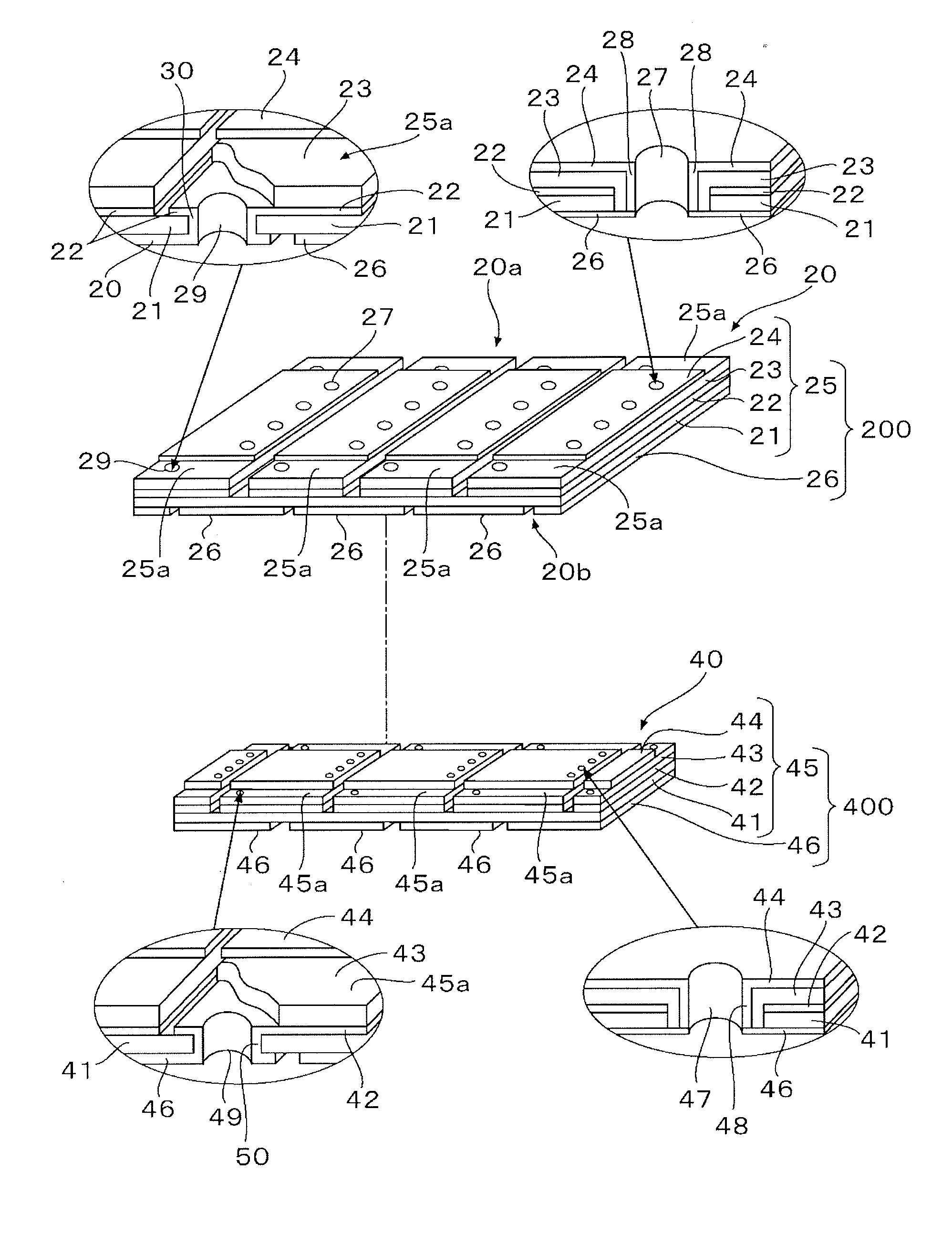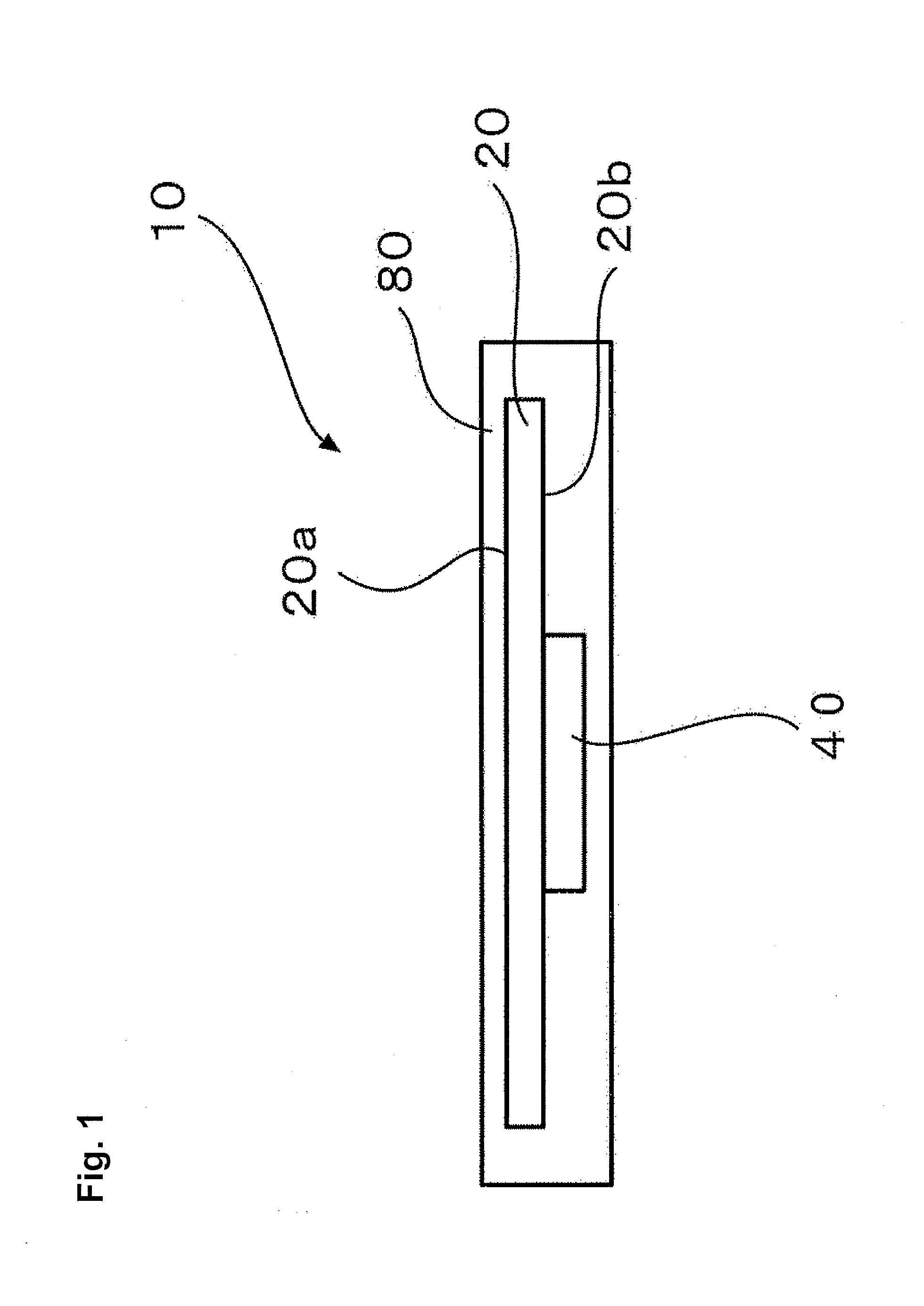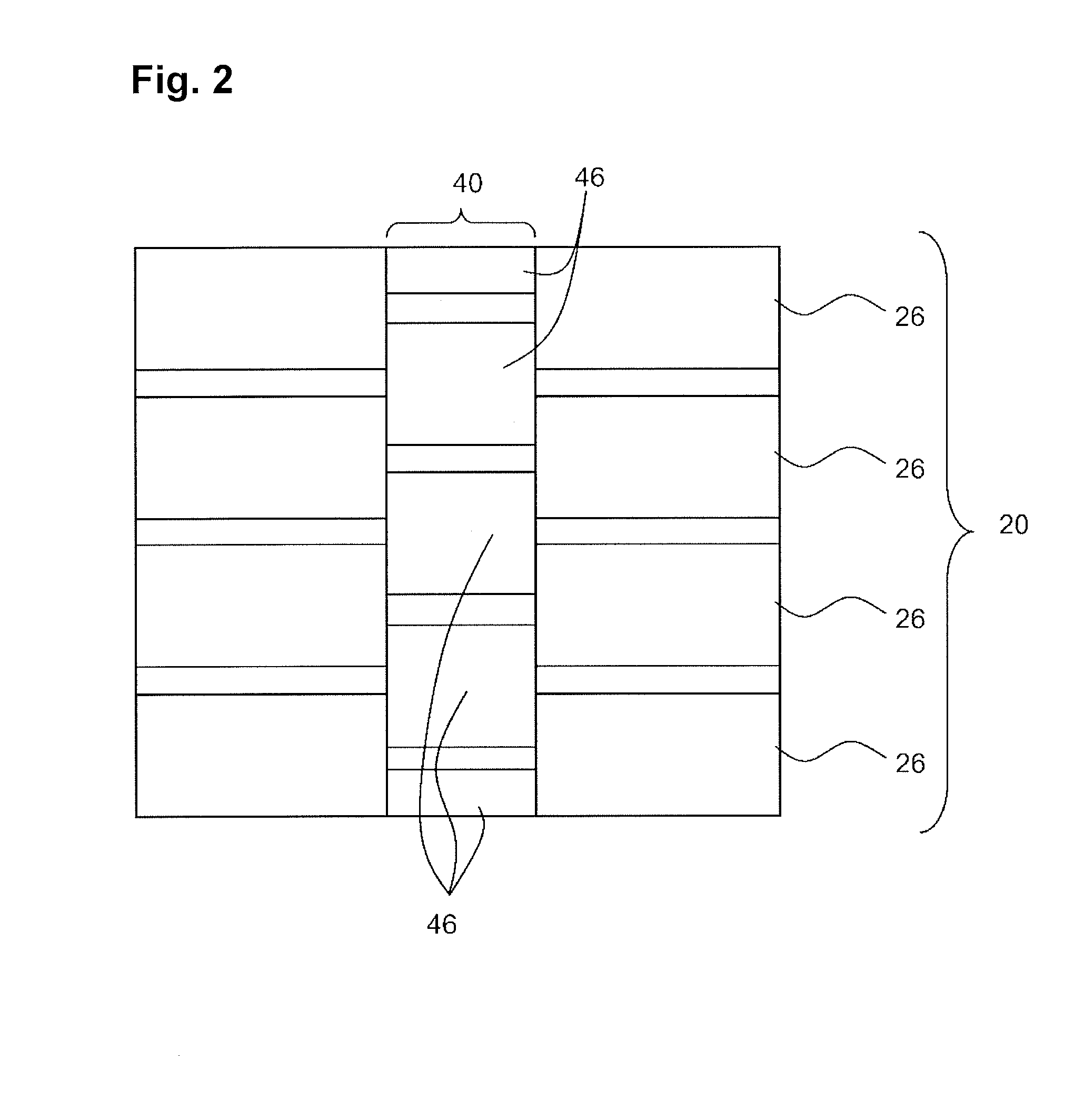Photovoltaic module
a photovoltaic module and photovoltaic technology, applied in the field of photovoltaic modules, can solve the problems of thermal damage to the photovoltaic cells, poor attachment workability of the bypass diode type, and lowering the generation of electricity per area, so as to prevent local concentration of current, reduce the generation of leakage paths in the diode part, and increase resistance
- Summary
- Abstract
- Description
- Claims
- Application Information
AI Technical Summary
Benefits of technology
Problems solved by technology
Method used
Image
Examples
Embodiment Construction
[0030]An embodiment of the photovoltaic module according to the present invention is described with reference to FIGS. 1 to 6.
[0031]FIG. 1 is a schematic diagram showing a cross section of a photovoltaic module 10. FIG. 2 is a schematic diagram showing a bottom surface of the photovoltaic module 10. The photovoltaic module 10 is mainly configured by a photovoltaic cell assembly 20 and a diode assembly 40. The diode assembly 40 is configured such that an electrode layer of a non-light receiving surface 20b of the photovoltaic cell assembly 20 and an electrode layer of the diode assembly are pressure-bonded to each other, whereby these electrode surfaces surface-contact and are joined to each other. The diode assembly 40 and the photovoltaic cell assembly 20 are integrated and sealed by a sealing member 80. When viewing the bottom surface of the photovoltaic module 10, back surface electrode layers 26 (four, in FIG. 2) of photovoltaic unit cells constituting the photovoltaic cell asse...
PUM
 Login to View More
Login to View More Abstract
Description
Claims
Application Information
 Login to View More
Login to View More - R&D
- Intellectual Property
- Life Sciences
- Materials
- Tech Scout
- Unparalleled Data Quality
- Higher Quality Content
- 60% Fewer Hallucinations
Browse by: Latest US Patents, China's latest patents, Technical Efficacy Thesaurus, Application Domain, Technology Topic, Popular Technical Reports.
© 2025 PatSnap. All rights reserved.Legal|Privacy policy|Modern Slavery Act Transparency Statement|Sitemap|About US| Contact US: help@patsnap.com



